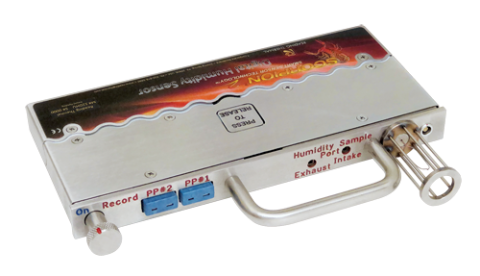Humidity plays a crucial role in the baking process, significantly impacting the quality, texture, and appearance of baked goods. Commercial oven systems must maintain precise humidity levels to achieve consistent and high-quality baking results. In the past, monitoring humidity in commercial oven systems was often a very inefficient, time-consuming process. But the SCORPION® 2 Digital Humidity Sensor from Reading Thermal has changed the way bakeries perform this vital task.
Here’s some information on why monitoring humidity is critical to optimal baking performance.
How Humidity Affects the Baking Process
Humidity refers to the amount of moisture present in the air, and it directly influences the baking process in several ways. The moisture content in the air affects dough consistency, crust formation, rise and overall product texture. Additionally, humidity levels impact the rate of evaporation during baking, which can affect product volume, color and shelf life.
One of the primary reasons for monitoring humidity in commercial oven systems is to ensure uniform baking results across different products and batches. Different types of baked goods, such as bread, pastries and cookies, require specific humidity levels to achieve the desired texture and appearance. By maintaining consistent humidity levels, bakery operators can produce products with consistent quality, texture and flavor.
Humidity control is also essential for preventing product defects and ensuring proper crust development. Inadequate humidity levels can result in dry, cracked crusts or uneven browning, while excessive humidity may lead to soggy or dense textures. By monitoring and adjusting humidity levels during the baking process, bakery operators can achieve optimal crust formation, texture, and appearance for each product.
Performance and Energy Efficiency
In addition to influencing product quality, humidity levels also affect oven performance and energy efficiency. High humidity levels can increase the workload on oven ventilation systems and lead to excessive energy consumption. On the other hand, low humidity levels can cause dry air, leading to product dehydration and decreased baking efficiency. By monitoring humidity levels and adjusting oven settings accordingly, bakery operators can optimize energy usage and reduce operating costs.
There are several methods used to monitor humidity in commercial oven systems, ranging from manual observation to advanced automated control systems, such as the SCORPION® 2 Digital Humidity Sensor from Reading Thermal. Our sensor uses advanced technology to measure the relative humidity inside the oven chamber. It provides real-time data on humidity levels, allowing bakery operators to make immediate adjustments to oven settings as needed.
Another method of humidity monitoring involves observing product characteristics during the baking process. Experienced bakers can assess the dough’s appearance, texture and rise to gauge humidity levels and make adjustments accordingly. However, no matter how experienced a baker may be, they could still make a mistake that affects product quality. Our SCORPION® 2 Digital Humidity Sensor eliminates that possibility
Get in Touch for More Information
Monitoring humidity is essential for achieving consistency and high-quality. By maintaining precise humidity levels, bakery operators can produce products with the desired characteristics while optimizing oven performance and energy efficiency. Using sophisticated humidity sensors makes it much easier for bakery operators to control humidity, meet customer expectations and maintain competitiveness in the market.
If you would like to learn more about how Reading Thermal can increase efficiency in the area of monitoring humidity in commercial oven systems, please use our online form or call 610-678-5890.

